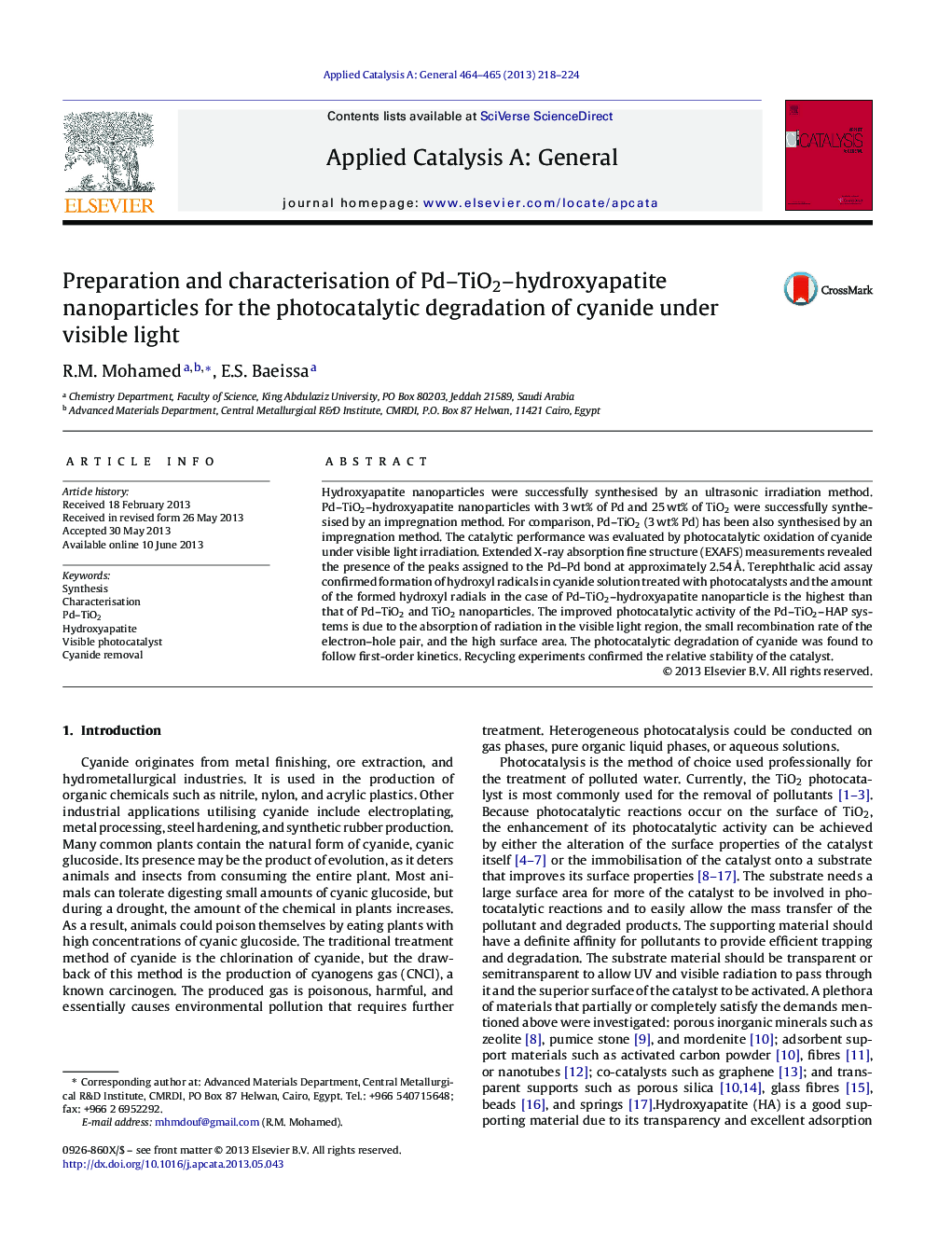| کد مقاله | کد نشریه | سال انتشار | مقاله انگلیسی | نسخه تمام متن |
|---|---|---|---|---|
| 40124 | 45844 | 2013 | 7 صفحه PDF | دانلود رایگان |

• A novel Pd–TiO2–HAP nanoparticles is prepared.
• The photocatalytic properties were studied upon visible irradiation.
• Pd–TiO2–HAP nanoparticles show superior photocatalytic activity.
• Pd–TiO2–HAP nanoparticles remain effective and active after five cycles.
Hydroxyapatite nanoparticles were successfully synthesised by an ultrasonic irradiation method. Pd–TiO2–hydroxyapatite nanoparticles with 3 wt% of Pd and 25 wt% of TiO2 were successfully synthesised by an impregnation method. For comparison, Pd–TiO2 (3 wt% Pd) has been also synthesised by an impregnation method. The catalytic performance was evaluated by photocatalytic oxidation of cyanide under visible light irradiation. Extended X-ray absorption fine structure (EXAFS) measurements revealed the presence of the peaks assigned to the Pd–Pd bond at approximately 2.54 Å. Terephthalic acid assay confirmed formation of hydroxyl radicals in cyanide solution treated with photocatalysts and the amount of the formed hydroxyl radials in the case of Pd–TiO2–hydroxyapatite nanoparticle is the highest than that of Pd–TiO2 and TiO2 nanoparticles. The improved photocatalytic activity of the Pd–TiO2–HAP systems is due to the absorption of radiation in the visible light region, the small recombination rate of the electron–hole pair, and the high surface area. The photocatalytic degradation of cyanide was found to follow first-order kinetics. Recycling experiments confirmed the relative stability of the catalyst.
The high photocatalytic activity of the Pd–TiO2–HAP system is due to absorption in the visible light region, small recombination rate of the electron–hole pair, and high surface area.Figure optionsDownload high-quality image (122 K)Download as PowerPoint slide
Journal: Applied Catalysis A: General - Volumes 464–465, 15 August 2013, Pages 218–224